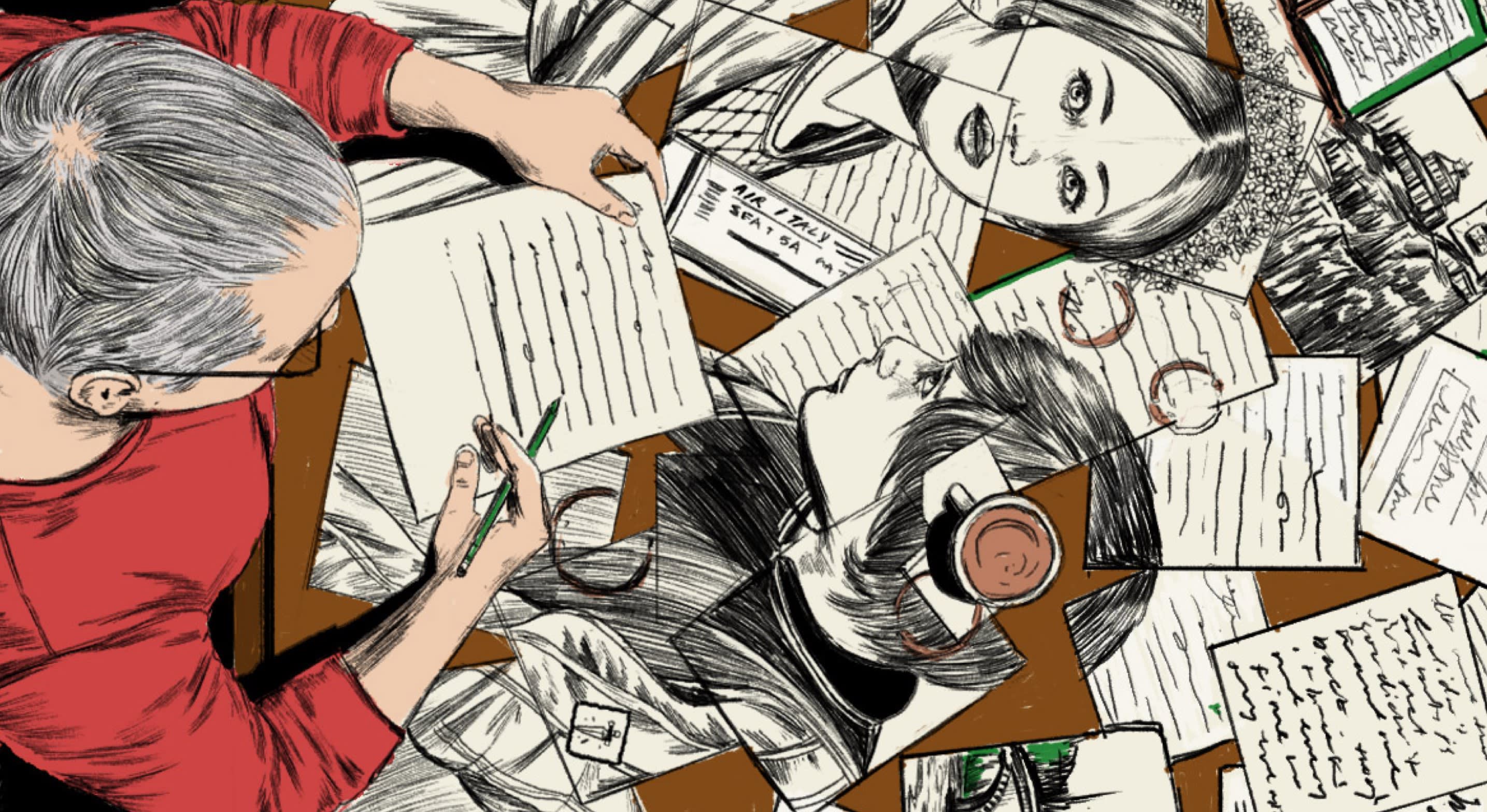There’s an important clue to the nature of this work on the cover of Romeo and Juliet, A Novel. It says “Richard Armitage performs…” Performs. Not “narrates” — this isn’t a book that someone’s reading to you. It’s a script specifically designed for the fast-developing and incredibly subtle art of audiobook performance.
The first challenge for a writer like me, coming to audio, is to bury the novelist inside and try to find the dramatist instead. This is a new medium and I have to try to tailor the story directly to its strengths. What I’m trying to achieve, with the essential help of a world-class narrator like Richard Armitage, is having the listener tap into the most powerful CGI machine known to man: the human imagination.
In German there’s a word for this: Kopfkino, literally “cinema in the head.” That moment when you find your mind fills with a sudden, visual internal drama, a movie in miniature, complete with actors, scenery, and action. Sometimes it might be pleasant — what would have happened if I’d said yes to that dinner date instead of no? Sometimes … not so great: What would have happened if I’d stepped out of that cab mid-traffic ten seconds earlier?
You must persuade your listener to participate, to bring the three key elements of any kind of fiction — narrative, characters, and world — to life, themselves. When that works you have the richest storytelling experience there is.
How can you hope to do this? By trying to give your performer the very best blueprint for the job, then standing back and letting them use their talents. Writing for print, I produce the finished work, but when writing for audio, I’m more like an architect who sketches out the plans, then hands them over to someone like Richard, a master builder of drama, to turn them into multi-layered, fascinating story.
Here are some of the strictures I try to apply to myself throughout. I’ve developed them as my audio work has increased over the years. But to be honest, they’re pretty good ideas for printed fiction work, too.
Simplicity
A physical book has a form of simple navigation built in. We know from the feel of the pages how far we’ve traveled and the distance left to go. We can flick backwards and forwards very easily. It’s a well-mapped journey throughout.
Once stories turn digital, navigation isn’t so simple. Yes, there are ever more sophisticated tools that let you skip and navigate around the story, but listeners still crave audible signposts along the way, an indication, hopefully suggested by the story, where they should stop, rather than abandon something unsatisfactorily mid-scene.
Here are some of the ways I try to achieve this.
Write in short scenes. The average scene length in R&J is probably around 1,000 words, or five minutes or so in listening time. Some may run to twice that, but they’re rare and usually important. Short scenes make it easier for the listener to choose when to break off or listen to just one more.

Romeo and Juliet: A Novel
Romeo and Juliet Kiss
Structure the narrative in parts (or acts). R&J breaks down into four parts and they don’t follow the theatrical acts of Shakespeare. My novels Macbeth and Hamlet did this too, breaking the narrative at critical junctures in the story. R&J happens over a few days, so it’s broken up by day, with an audio marker that sort of says to the listener: We’re starting a new section of the story now. It’s going to be big, so if you want to put it off until you have the time, now’s the point to do it.
Always, always make it clear at the beginning of the scene where we are and whose point of view is in operation, if any. Listeners need to know that. They shouldn’t feel they have to catch up on what’s happening.
Make the narrative linear. Time jumps, flashbacks, and flash forwards are going to produce speed bumps that will confuse the audience. I’m producing mainstream narrative fiction, even if it is based on Shakespeare. I want the prose to be everyday and close to conversational, with the odd flourish here and there back to Shakespeare’s original. Listeners should be engrossed in the story, not thinking about how it’s written or the cleverness of the author. The best writing is the writing that’s invisible, just as the best acting doesn’t look like acting at all.
Dialogue
I’m working with world-class performers, and part of my job is to help them shine. A novel is a work inside itself; the author is the cast, narrator, cinematographer, and director. An audio project is closer to a film, TV, or stage script. While the words won’t usually be changed (unless someone spots an error — and that will happen), I want the narrator to use my words as a blueprint for his or her own talents and imagination. Once it’s handed over, it’s theirs. The way I write the dialogue is essential in all this.
Dialogue must match the character. I hope you won’t notice this until I point it out (writing, I repeat, should be invisible), but the characters in R&J all speak differently, according to their roles and their class. Paris, the aristocratic count, uses words in a pompous, almost long-winded fashion. Capulet is a surly, ageing tyrant too fond of his drink, to the extent that, at one point, he’ll forget which day it is (something I take directly from the play). Juliet is young, highly intelligent, and cultured in a broad, worldly sense. Romeo is obsessed with poetry and, to begin with, tries to speak in a poetic fashion (again, something from the play). And Nurse … is a voluble working-class woman who’s not quite as daft as she seems. Richard handles all these through accents, of course, but word usage, sentence length, and general tone are equally important. Nurse needs to talk like a washerwoman, while Paris has to sound as if he’s aware he’s slumming it a bit by deigning to marry a mere merchant’s daughter.

Rome and Juliet: A Novel
Nurse and Juliet
Speech must be clearly attributable without lots of “he said” and “she said” (dialogue tags). Mostly I will leave it out and let the narrator deal with the change in speaker through accent and approach. Richard does this brilliantly, of course, and takes a really imaginative approach to the task. When we met up during the early recording sessions in London, he told me he was voicing Nurse as a Brummie — a working-class woman from the Midlands in England. It’s a very marked and broad accent. Nurse actually comes from a rough and ready fishing village on the shores of Lake Garda. She’d sound ridiculous with an Italian accent. Brummie works perfectly. And it means we know it’s her the moment she opens her mouth.
Speech must be easy to understand and straightforward. One of the key ideas behind this kind of adaptation is that it sets Shakespeare’s language to one side. It’s difficult, archaic, and often open to interpretation, even by experts. I will fit in elements from the play from time to time, often morphed or even used in a different context as I see fit. But I’m not trying to copy Shakespeare or produce an alternative theatrical dialogue. These are people from the late fifteenth century speaking in modern, comprehensible English, occasionally with a twist. Anything else and we’d be back producing speed bumps for the reader.
Location
As I said earlier, for me, stories sit on three key pillars: characters, narrative, and world. It’s essential the first two come out of the last. If anything I write — whether it takes place in Scotland, Italy, Amsterdam, or Copenhagen — can be easily transferred to a new location, then I’ve failed to do my job. It was essential that I make the world of Romeo and Juliet vivid and real, whether in Verona or during Romeo’s brief sojourn in Mantua. I spent a week visiting both places in a chilly February before writing a word of the story. If I can’t see the world in my head, I can’t reproduce it for readers and listeners. It was particularly gratifying to hear from Richard that he loved the Verona I’d painted, as a new take on a city he’d visited, with aspects he’d never seen while he was there.
That’s what writing location is about: Making people see the world with fresh eyes, even if they already know well the place you’re writing about. People, places, and events all coming together to spark the Kopfkino moment, the all-powerful CGI machine inside us that creates a movie in the mind. When that works you have the richest storytelling experience there is.







